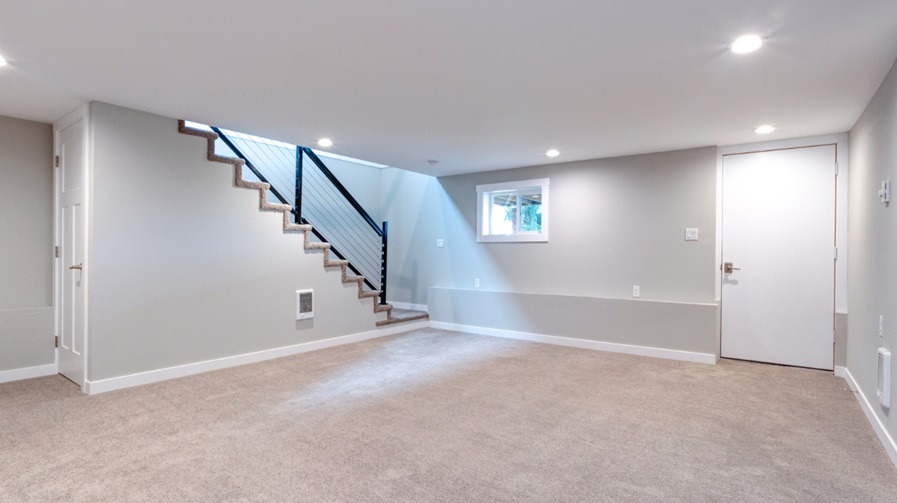Basement remodeling is a popular home improvement project that can significantly increase living space and property value. Homeowners undertaking basement remodeling in Alpharetta face an important decision: choosing between open and closed layouts. This choice impacts the functionality, aesthetics, and overall feel of the renovated space. Understanding the pros and cons of each layout option is crucial for creating a basement that meets specific needs and preferences. This article explores the key differences between open and closed basement layouts, helping homeowners make informed decisions for their remodeling projects.
Understanding Open Layouts
Open layouts in basement remodeling create a spacious, versatile environment by minimizing interior walls and partitions. This design approach emphasizes a continuous flow between different areas, making the basement feel larger and more cohesive. Open layouts allow natural light to penetrate deeper into the space, enhancing brightness and creating an airy atmosphere. This design is particularly beneficial for basements with limited square footage, as it prevents the space from feeling cramped or confined.
Benefits of Open Designs
Open layouts offer flexibility in furniture arrangement and room functionality, allowing homeowners to easily adapt the space to changing needs over time. When planning your project, it’s important to explore key considerations when finishing a basement, including how an open layout can enhance the overall feel and usability of the space. These designs are ideal for entertaining, as they facilitate better social interaction and traffic flow during gatherings.
Advantages of Closed Layouts
Closed layouts in basement remodeling involve dividing the space into separate rooms or areas using walls and doors. This approach offers distinct advantages, particularly for homeowners seeking to create specific functional spaces within their basements. Closed layouts provide privacy and sound isolation, making them ideal for creating home offices, bedrooms, or entertainment rooms.
Benefits of Compartmentalized Spaces
Closed layouts allow for better temperature control in individual areas, which can be especially beneficial in basements where maintaining consistent temperatures can be challenging. They also offer the opportunity to customize each room for its intended purpose, from lighting and flooring to wall treatments and storage solutions. This design approach can effectively maximize the utility of the basement space, creating dedicated areas for various activities and needs.
Hybrid Approach: Combining Open and Closed Elements
A hybrid approach that combines elements of both open and closed layouts can offer the best of both worlds in basement remodeling. This design strategy involves creating partially open spaces with strategic use of room dividers, half walls, or sliding doors. Such an approach maintains a sense of openness and flow while still providing options for privacy and separation when needed.
Implementing a Flexible Design
In a hybrid design, a basement could feature an open living and dining area connected to a more enclosed home office or guest bedroom. This flexible design allows homeowners to enjoy the benefits of an open layout while still having dedicated spaces for specific functions. The hybrid approach can be particularly effective in larger basements where different zones can be created without sacrificing the overall sense of spaciousness.
Factors Influencing Layout Choice
Several factors should be considered when deciding between open and closed layouts for basement remodeling. The existing structure of the basement, including support beams and utility locations, can influence layout options. The intended use of the space plays a crucial role; for instance, a home theater might benefit from a closed layout, while a family recreation area might work better with an open design.
Professional Guidance in Layout Selection
When planning a basement layout, natural light availability and the overall dimensions of the space are key factors to consider. Additionally, local building codes and regulations, particularly regarding egress requirements for bedrooms, can significantly impact layout options. Professional contractors play a crucial role in ensuring compliance with these regulations and effectively implementing the chosen design, making sure all aspects are safe, functional, and aesthetically pleasing.
Conclusion
Choosing between open and closed layouts for basement remodeling depends on various factors, including personal preferences, functional requirements, and the physical characteristics of the space. Open layouts offer versatility and a sense of spaciousness, while closed layouts provide privacy and dedicated functional areas. A hybrid approach can combine the benefits of both styles. Careful consideration of these options, along with professional guidance, can help homeowners in Alpharetta and beyond create basement spaces that enhance their homes’ functionality and value. Ultimately, the right layout choice will result in a basement that seamlessly integrates with the rest of the home while meeting the unique needs of its occupants.


Comments are closed.